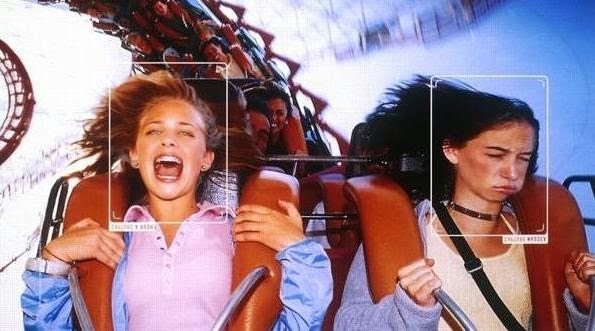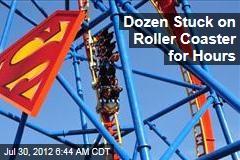
POLL: Are Amusement Parks Becoming Too Dangerous?
August 25, 2014
Current Events
 Higher. Faster. Longer. More high tech. These are the buzz words today’s amusement parks rely on to keep long lines of customers streaming into their venues. But when does a ride become too high, too fast, too long and too high tech?
Higher. Faster. Longer. More high tech. These are the buzz words today’s amusement parks rely on to keep long lines of customers streaming into their venues. But when does a ride become too high, too fast, too long and too high tech?
In July, 4 people were injured on the Ninja ride at Six Flags Magic Mountain near Los Angeles, when a tree branch fell on the tracks and derailed a roller coaster car. The derailed car was left dangling precariously with its occupants stranded nearly upside-down for hours. Once rescued, 2 of the 4 injured were taken to a nearby hospital.
Also in July, a cable on the Skyhawk swing ride at Cedar Point near Cleveland snapped, striking and injuring 2 riders while the swing was in motion.
The ride features 2 giant arms that hold up to 20 passengers on each, which swing back and forth 125 feet in the air and at speeds of up to 60 mph. According to an eyewitness, a thick metal cable broke loose from one of the arms early in the ride. The cable, estimated by witnesses to be about 100 feet long and 1½ inches thick, broke free from the top of one of the arms, fell to the ground, then flailed wildly as the swing continued to move back and forth.
“There were shooting sparks when it hit the ground,” said the eyewitness. “It took out fences on both sides. That was a pretty gnarly accident.”
This month, rescuers pulled stranded riders from a roller coaster at Six Flags America in Maryland after the ride halted on the tracks.
A train on the Joker’s Jinx roller coaster stopped about 45 feet from the ground on August 10th with 24 people aboard. Luckily, no one was injured.
Current Events
When patrons visit an amusement park, they assume the rides are safe and technologically sound and tested. However, a recent rash of mishaps is proving this may not always be true.
Dr. Gary Smith, director of the Center for Injury Research and Policy at Nationwide Children’s Hospital in Columbus, published a study tracking amusement ride injuries among those 17 and younger via emergency room reports between 1990-2010. His finding: More than 4,400 kids are injured every year in amusement-ride-related accidents, at both permanent parks and fairs and carnivals. The most common injuries are caused by falls, followed by hitting a body part on a ride or being hit by something while riding. At least 1.5% of these accidents resulted in hospitalization.
“Yes, these rides are relatively safe,” acknowledged Dr. Smith, whose specialty is pediatric emergency medicine. “But we can make them safer.”
Do you ever consider safety before boarding a ride at an amusement park or makeshift traveling carnival? Do you believe these rides are always properly inspected and safe? Are amusement parks becoming too dangerous?
TAKE OUR POLL:
(function(){var voice = document.createElement(‘script’); voice.type = ‘text/javascript’;voice.src = (‘https:’ == document.location.protocol ? ‘https://’ : ‘http://’) + ‘d3atj1huicz51x.cloudfront.net/widget/p.js’;var s = document.getElementsByTagName(‘script’)[0];s.parentNode.insertBefore(voice, s);})();








